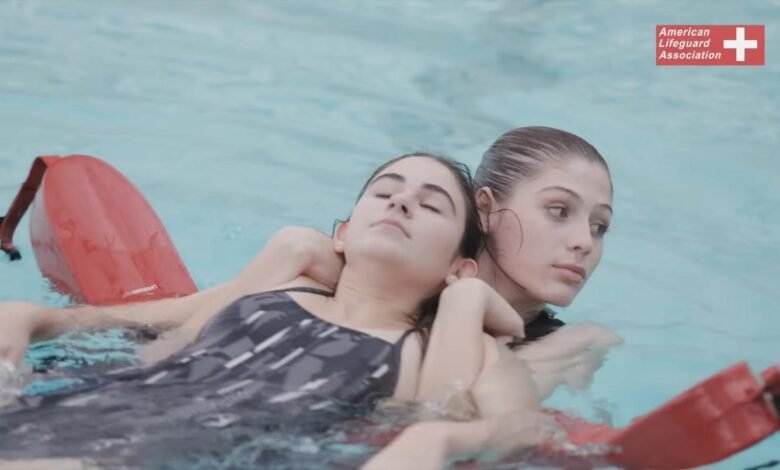Get Ready, Lifeguards: A New Season Begins This Summer

Summer is approaching fast and soon will wake up beaches, pools, and water parks to activity. Now is the time for lifeguards to prepare refresh skills, refresh protocols, and check certifications. Re-certification of lifeguards is a critical component in readiness, and access to these ALA resources within a leading training organization benefits lifeguards to sharpen them to be top-notch before the season starts.
Here, we cover everything that lifeguards need to know to bam up for summer, including the importance of lifeguard recertification, essential skills to brush up on, physical conditioning tips, and how organizations like the American Lifeguard Association support lifeguards in staying prepared.
Why Lifeguard Renewal is Important
Being a lifeguard is an active profession; it needs constant attention, quick decisions, and physical endurance. Because events can happen at any moment, certification refers to the highest standard of safety and response that every lifeguard should have.
The Importance of Recertification:
- Updated protocol – Water rescue techniques and first-aid procedures have changed, an aspect recertification attends to.
- Legal Aspect – Current certifications are required by many states and employers as working lifeguard evidence.
- Confidence Booster – Skill sets are enhanced regularly through drills so that hesitation is minimized during emergencies.
- Employment Opportunities – Facilities prefer lifeguards with active certification because re-certifications are essential for career growth.
The American Lifeguard Association offers nationally recognized programs that correspond with industry standards making their lifeguard recertification courses a viable option for professionals.
Essential Skills to Examine Before Summer
Even lifeguards at the peak of their careers have to revisit these core subjects in preparation for the season. Here are the important areas to be looked upon:
1. Rescue Techniques
- Active vs. Passive Victims – Differentiate and apply rescue techniques accordingly.
- Spinal Injury Management – Stabilization and extraction techniques for potential spinal-injury victims.
- Rescue Equipment – Refresher on tubes, backboards, and AEDs.
2. CPR & First Aid
- High-quality CPR – Compression depth, rate, and rescue breaths for adults, children, and infants.
- AED – Different models and a variety of scenarios must be familiar.
- First Aid Responses to Common Injuries – Cuts, fractures, reactions to heat exhaustion, and rescue from drowning situations.
3. Surveillance & Prevention
- Effective Scanning – The 10/20 rule (scan every 10 seconds, reach a victim within 20).
- Recognizing Signs Of Distress – Not all drowning victims scream or wave; silent drowning is a very real threat.
- Enforcing Rules – Prevention is always better for avoiding emergencies.
4. Physical Conditioning
This job is physically demanding; therefore, it becomes most important to focus on:
- Swimming Endurance – Distance in a timed swim (500 ft+ with no rest)
- Sprint Swimming – Very short distances to mimic emergency swimming.
- Treading – Long duration with or without equipment.
- Strength – This focuses on core and upper body strength for the rescue of victims.
What a Lifeguard Needs To Expect When Recertifying
Now is the time to renew if your certification is on the verge or has lapsed. Here is what to expect in the course associated with lifeguard recertification:
1. Online or Blended Learning
Most programs, including those from the American Lifeguard Association, have a module online for their theoretical components, followed by testing of practical skills in person.
2. Skills Assessment
- -Water Rescue Demonstrations – timed swim, victim retrieval, and equipment use.
- -CPR & First Aid Testing – compressions, AED use, and injury management.
- -Scenario-based training – simulated emergencies to test decision-making under pressure.
3. Written Test
The last exam assesses an understanding of lifeguarding principles, emergency procedures, and rules of safety for their facility.
Most recertification courses take 1-2 days, providing convenience for working professionals.
Staying Sharp Beyond Recertification
A lifeguard’s training starts with getting certified, but honing one’s skills must continue throughout the season.
1. In-Service Training
Be on the lookout for drills your institution may be hosting. Get involved in them!
2. Review Incident Reports
The old adage says that those who do not learn from history are doomed to repeat it. Learn from past emergencies (yours or alternate) to improve response execution.
3. Keep Fit
- Swim Practicing – Become proficient in stamina and speed.
- Cross-Training – Improve overall fitness with such activities as jogging, resistance training, or yoga.
4. Preparing Yourselves Mentally
- Visualization – Envision scenarios of various rescues, thereby improving reaction times.
- Stress Management – Lifeguarding can be a stressful environment; find time and use relaxation techniques.
Why Choose the American Lifeguard Association for Recertification?
With countless organizations offering lifeguard training, the American Lifeguard Association flourishes due to:
- Nationally Recognized Certification: Accepted by employers all over the U.S.
- Flexible Learning: Blended course solves busy schedules.
- Experienced Instructors: Real-life lifeguards sharing knowledge from the field.
For returners or anyone new to the profession, ALA’s recertification programs ensure that lifeguards are right on time for the challenge awaiting them in the forthcoming season.
Final Word: A Safe Summer Starts with Preparation
The lifeguard has a very important role in preventing drowning and safeguarding the public. By prioritizing recertification, reviewing critical skills, and staying in peak physical shape, that summer will find lifeguards on the stand with confidence.
What less is left to be done is to review one’s certification status, refresh and step into action for a wild summer. With support from organizations like the American Lifeguard Association as a partner in training, there will be nothing holding you back from being in a position to protect and serve.
Would it help if we find you a lifeguard recertification course in your area? Enroll yourself before the season rush begins through the American Lifeguard Association or any training firm in your area!
